
If you want to take your SaaS company’s MRR to the next level, it might be time for you to investigate the subject of product growth platforms.
By turning your product itself into a viral sales engine, these platforms take the pressure off traditional sales and marketing departments — and, of course, their associated budgets.
But with so many platforms out there, which one should your SaaS business choose?
This article will show you how to decide.
Try Userpilot Now
See Why 1,000+ Teams Choose Userpilot

Overview of product growth platforms for SaaS
- Unlike traditional sales or marketing, product-led growth makes your app itself into the center of your marketing activities. This is an incredibly scalable and automated approach.
- It’s almost impossible to build a product growth platform from scratch using code, so using third-party software is cheaper and faster.
- The best product growth platform is Userpilot.
- Depending on your needs, other good options include Appcues, Intercom, Typeform and Hotjar.
The emergence of the product-led growth strategy
In the past, any rapid growth that occurred in software companies was largely sales-based or marketing-based.
Sales-based growth meant sending thousands of outbound messages in an attempt to find the key decision-maker, shorten the sales cycle, and close aggressively.

Marketing-based growth necessitated the creation of content such as blog articles (like this one!), social media posts, Youtube videos or podcasts. Over time, the customer would form a relationship with your company, and that trust would eventually lead to a sale.
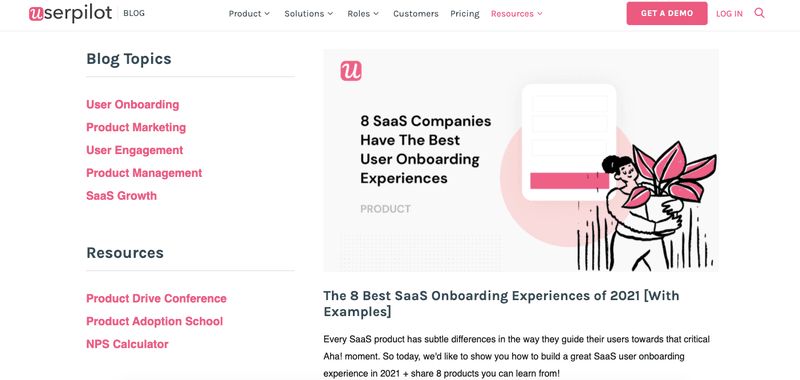
To be clear: both of these user acquisition strategies still work in 2022. But there is a new kid on the block…
What is product-led growth?
Over the past few years, companies like Slack, Airtable, and Trello have discovered that they can achieve rapid growth by turning their product itself into a lead generation tool.
Here are a few ways we’ve seen SaaS companies do this:
1) Building notifications that upsell new features into their product.

2) Rewarding customers in-app for referring the product to their friends.
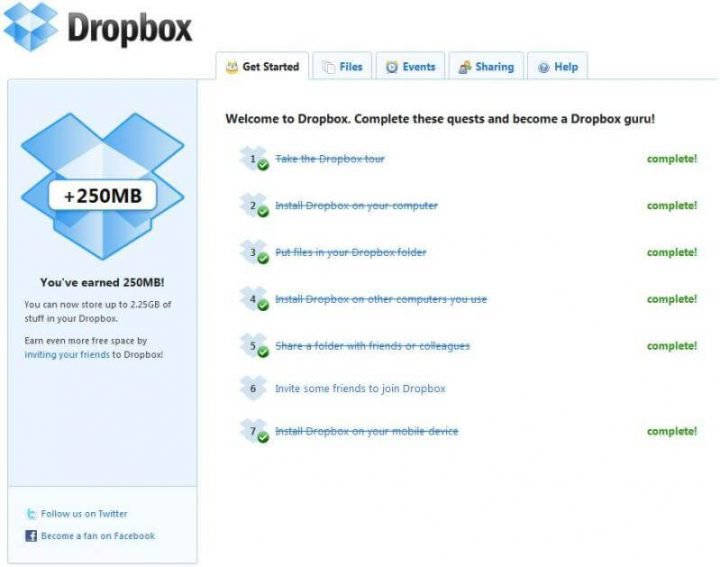
3) Building in-app product tours that demonstrate the value of the product.
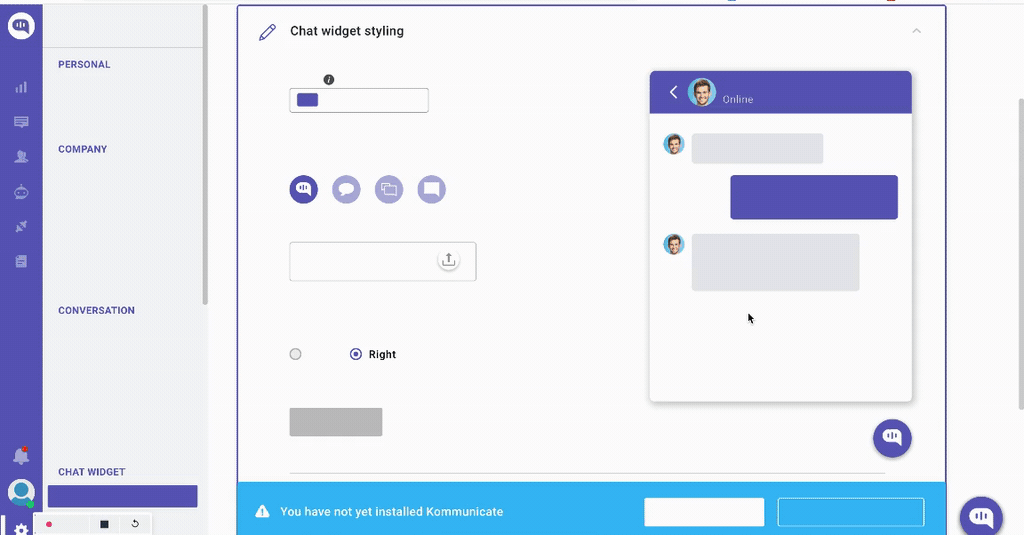
4) In-app contextual help that educates customers about the value of features over and over.
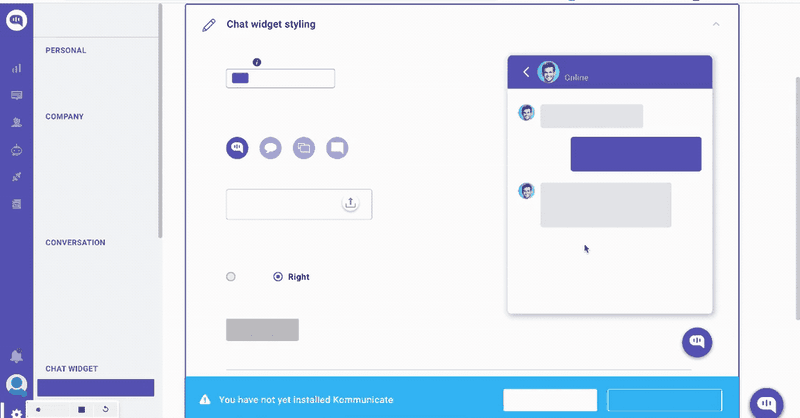
For more such strategies that will supercharge your SaaS growth, you might consider hiring a product marketer. This post has some great tips on how to do that.
Why is product marketing the future?
The product-led growth model has numerous advantages over traditional sales and marketing for many SaaS providers:
Lower customer acquisition costs: you don’t need to spend a fortune on salaries for large inbound or outbound marketing teams.
Less pressure on salespeople: If product automation drives a certain percentage of sales each month, that takes the heat off sales.
Self-service product adoption: Customers can start using your product at their own pace, in their own way, without needing to be rushed by your sales team.
Freemium-based pricing: SaaS products that focus on product marketing often use a freemium model, allowing their customers to experience value through free trials without having to pay immediately.
Bottom-up mindset, not top-down: This means that more money will be invested in R+D, leading to more technology that helps your SaaS business see customers’ problems from their perspective.
Why do SaaS companies need software to help with product-led growth?
For new executives in the SaaS industry, there can be a tendency to think that it’s “easy” to build a platform from scratch that upsells users, creates engaging product tours, or soft-sells through contextual help.
Nothing could be further from the truth.
Unless you have a large team of developers at your disposal with tons of free time, building bespoke software yourself is an expensive and time-consuming affair.
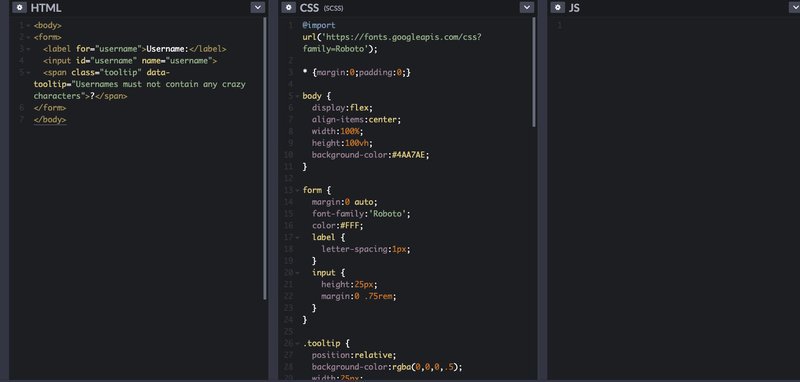
And consider also that you’ll have to maintain and tweak your software every time your product marketing team wants to A/B test something as banal as the background color of a modal.
Is that really what you want to pay your devs to spend their time doing? Or would you rather they were working on new product features?
Growth platforms empower your marketers
By contrast, if you partner with the right growth platform, even non-technical marketers will be able to run product experiments without bothering your devs.
Numerous platforms actually let product marketers experiment with product-led growth strategies without needing to build a line of code themselves.
It should be apparent that this is a much more scalable solution than trying to re-invent the wheel yourself.
The question is: which platform should you choose?
By which criteria should your SaaS company select a product growth platform?
Don’t be seduced into thinking that the cheapest growth platform is necessarily the best one.
Here are 4 substantive factors to bear in mind when you do your market research:
Code-free
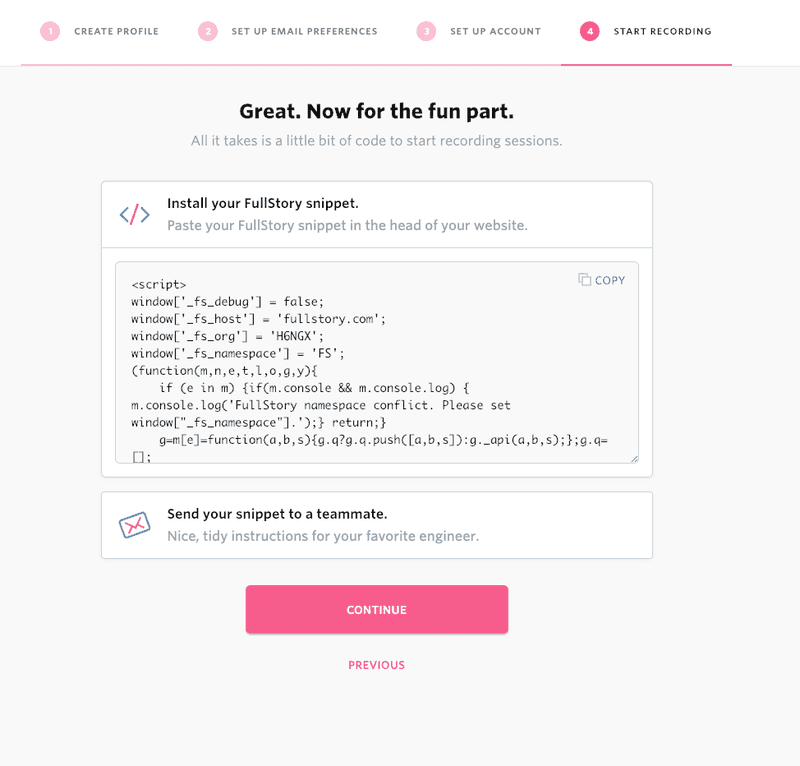
If you’re looking to invest in software that will save you time, it needs to actually be code-free.
Don’t fall for the companies that claim to be code-free, while secretly requiring you to use CSS to build any kind of advanced feature.
Analytics
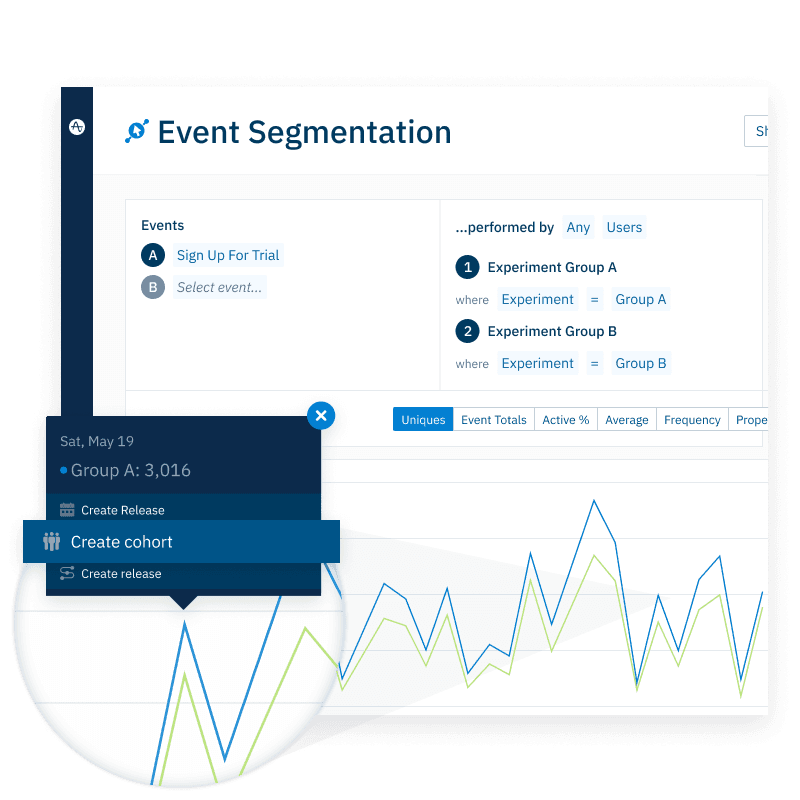
A big part of product-led growth is anticipating the needs of your customers and then providing them with what they need inside your product.
It’s difficult to do that without a repository of analytics data that shows you what your customers want and how they behave inside your product.
In-app communication
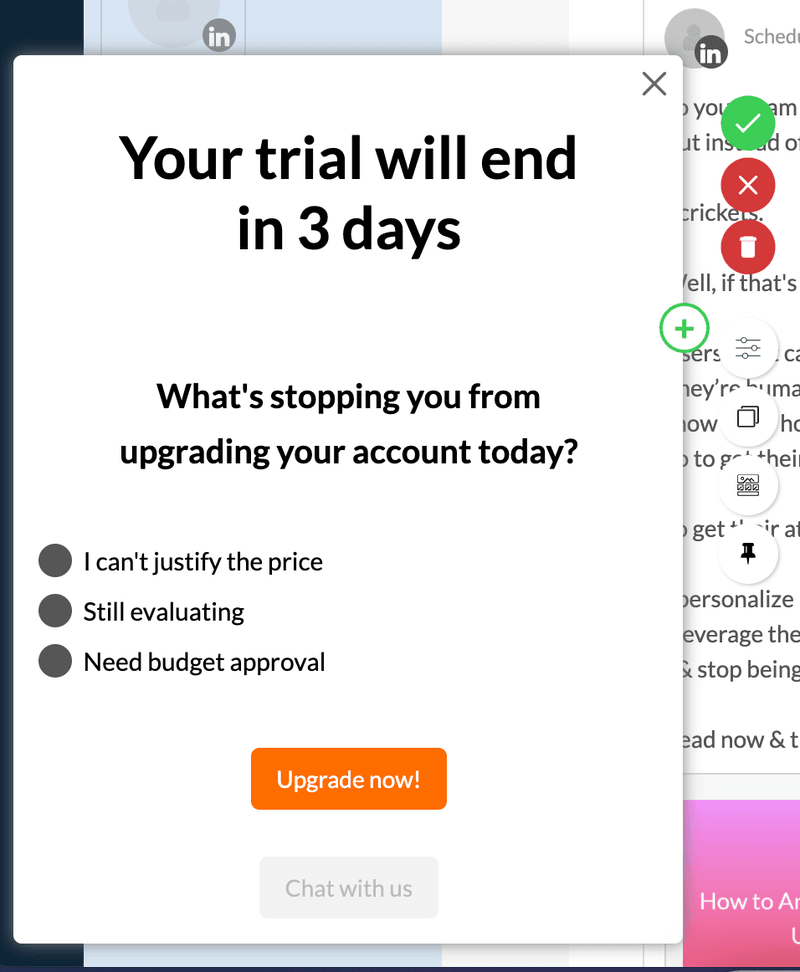
For your product to become the engine that drives your go-to market strategy, you need to be able to communicate with your customers inside your product itself.
This communication could take the form of a microsurvey, or a modal that upsells a new feature.
Segmentation
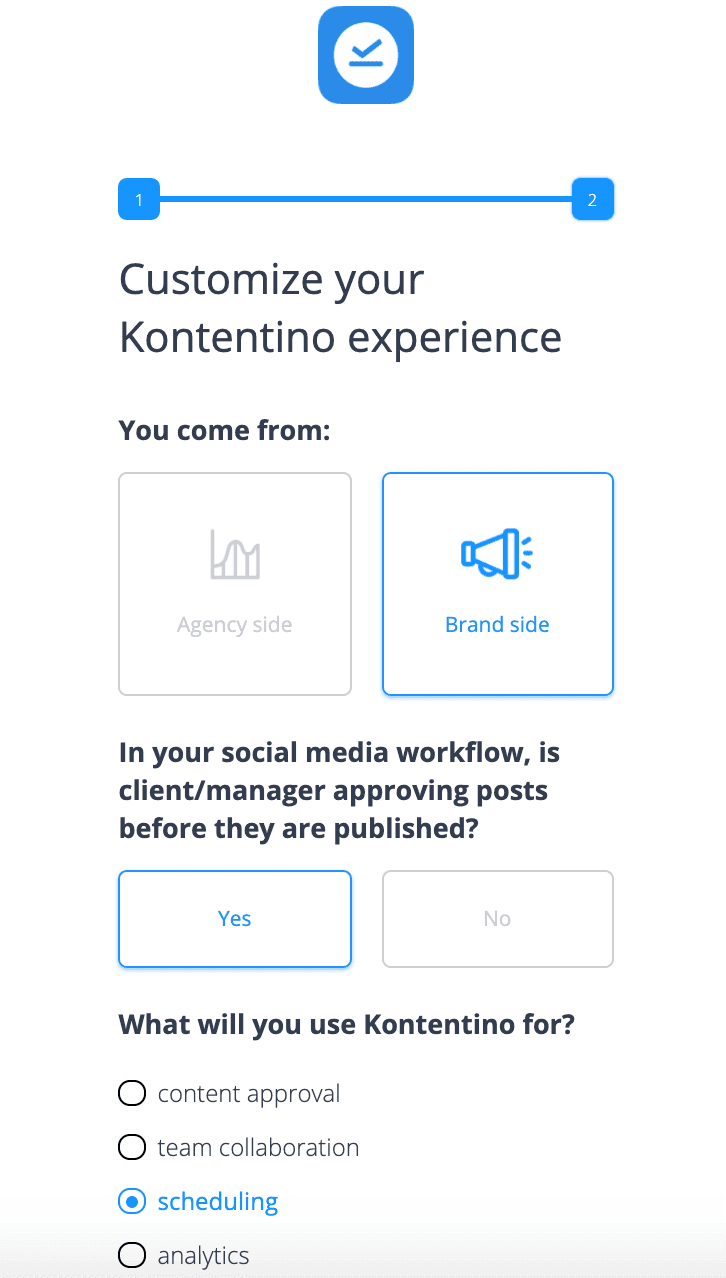
If you try to make your product appeal to all types of customer, you’ll end up appealing to nobody.
The worst type of product growth is a generic product tour that lists all the product features to each customer equally. Newsflash: your users will hate this!
The solution is to use a growth platform that helps you segment your customers, and then deliver value to each individual cohort in a unique way.
Top product-led growth platforms for SaaS businesses
Without further ado, here is our list of the leading product growth platforms on the market in 2022:
#1 – Userpilot
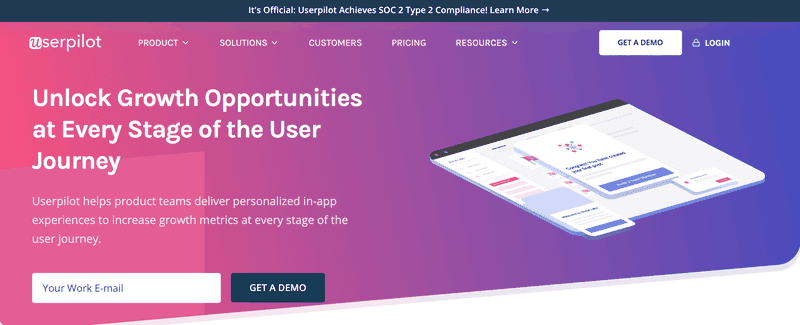
Our own product, Userpilot, is a product growth platform that will turn your app into an automated lead generation machine!
Product growth without code
Look, I’m completely non-technical, and even I am able to build UI patterns on Userpilot without needing to code.
Simply install a Javascript snippet so that Userpilot’s Chrome app can communicate with your site, and you’re done! It literally takes 10 minutes.
This is a far cry from the other platforms in the SaaS market that promise the world in terms of features but require advanced CSS for anything more complicated than a basic tooltip.
With our mobile SDK, you can create targeted onboarding flows using slideouts, carousels, and push notifications without writing extra code.
Analytics that tell you what to change to get more customers
Gone are the days where you’ll need to rely on intuition to know what to change about your product so that it can become your main marketing tool.
Userpilot comes with a sophisticated analytics suite, the UI for which was recently re-released to make it even easier to use.
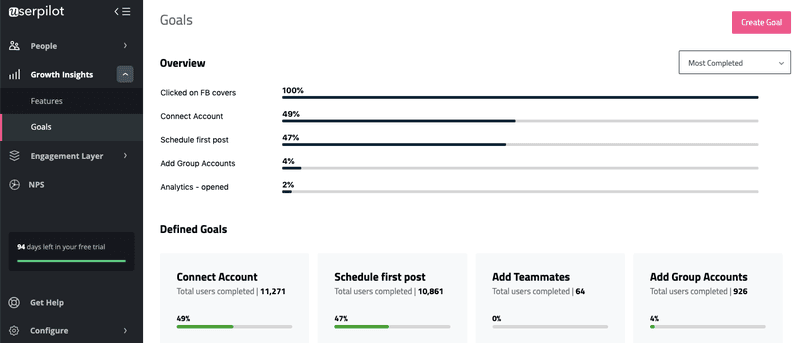
My personal favorite feature of the analytics suite is the A/B testing feature. (This page is great for explaining how to get the most out of it, by the way.)
There’s also a powerful NPS tool which allows you to survey customer sentiment in-app. If you followed this up with a qualitative microsurvey, you could use NPS to figure out things like:
- How to encourage promoters to refer you more business
- Which aspects of the user experience you should change in order to retain customers for longer, thereby increasing customer lifetime value.
- Areas where you can make better use of automated help software to illustrate the value of your app.
Keep communication in-app
And speaking of microsurveys, these are Userpilot’s best tool for in-app communication.
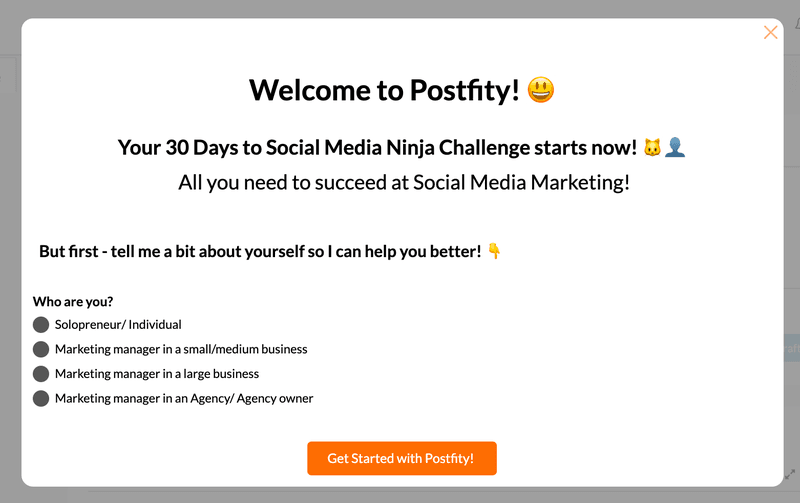
Using microsurveys means that you don’t need to rely on email to retain customers, organize referrals, or educate people on how to use your product. That means fewer distractions for your customers.

Instead, your microsurveys will help you figure out what your customer sentiment is at any given time.
Then, you’ll be able to offer upsells and referral bonuses with in-app modals, or improve customer education via an in-app help widget.
Bonus: your customer success team will love it, because they’ll have much less work to do!
Segmentation
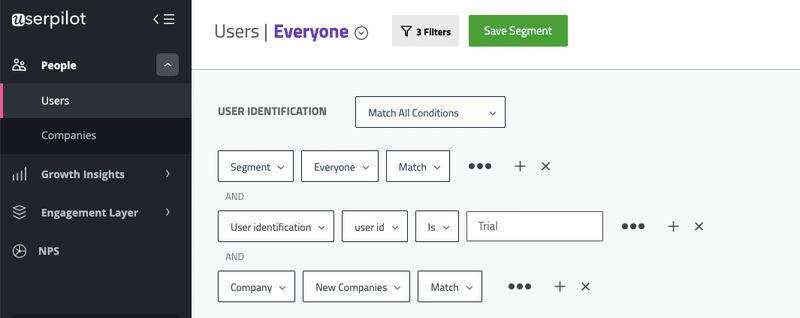
None of the above features would work without the ability to segment end users according to their individual needs and deliver a unique customer experience to each segment.
For example, if you wanted to only show a referral modal to customers with an NPS score of 8 or higher, you’d need to be able to separate out that group from all other users.
The good news: Userpilot lets you do that 🙂
Other ways you can segment apart from NPS include:
- By user attribute
- By custom event
- By location
- By feature tag
- By language
Pricing for Userpilot starts at $299/month (billed annually) for up to 2,000 MAUs. It includes in-app user engagement features, segmentation, trend analysis, NPS surveys, and essential product analytics. This plan is ideal for small and mid-market SaaS teams getting started.
#2 – Appcues
Launched in 2013, Appcues is the grandfather of the product growth industry. (Yes, 8 years is a lifetime in the SaaS world!)
It introduced the SaaS market to key features such as tooltips, hotspots and modals, and for that, we’ll always be grateful.
Appcues was also the first platform to make these features available to product marketers code-free. Although note that you do require advanced CSS to build some of the more flashy UI patterns.
My favorite part of Appcues is their data visualizations.
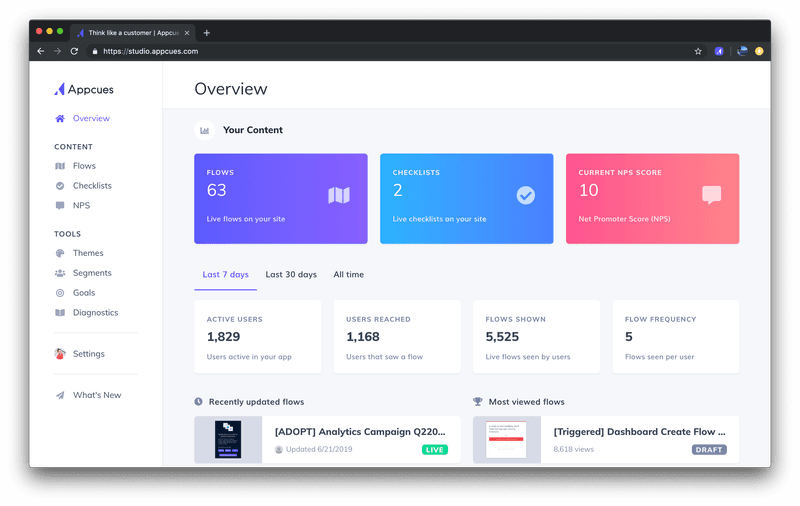
If you’re looking for a way to visualize which user segments are mostly likely to churn or refer you to a new business, this is a solid choice.
But looks can be deceiving.
This price only goes up to 5 segments, which isn’t enough for larger businesses, or even smaller SaaS outfits that take segmentation seriously (as you should).
If you’re wondering what the price is for 6 segments or more, it’s $849 per month, paid annually. So you will need to pay 10,500 for the whole year upfront!
This is pretty steep compared to Userpilot, which offers an unlimited number of segments at one fixed price point.
For more information about Appcues, I suggest reading this article.
#3 – Intercom
Intercom is an incredibly diverse tool that provides multiple product growth solutions.
It’s most famous for its support and in-app chat features. Both of these are excellent, particularly from the perspective of choosing a product growth platform that provides in-app communication options.
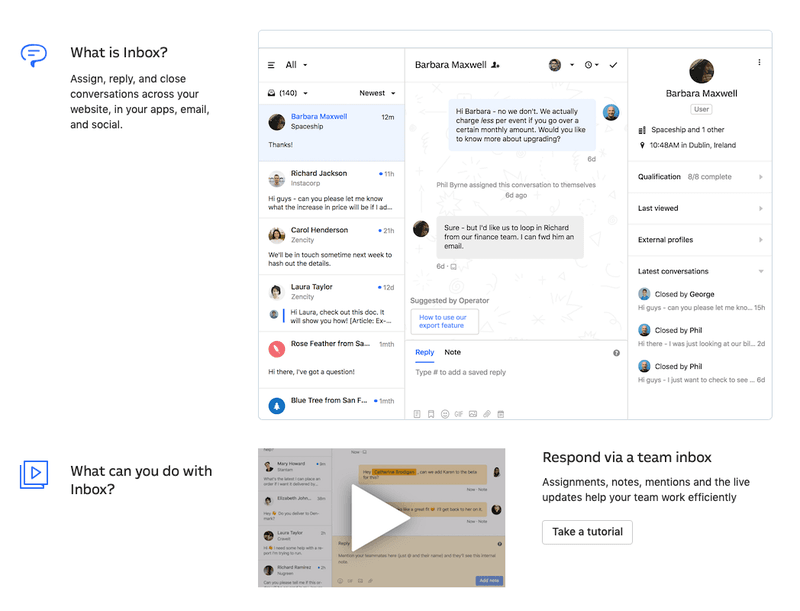
From an end user’s perspective, it’s easy to start up a chat, and you don’t even have to enter your email.
From the perspective of the SaaS company providing the chat experience, it’s relatively simple to customize chatbots, and these can be integrated with numerous other platforms.
Intercom also provides a product tour feature, which is designed to help your new customers understand the value they are deriving from your app.
But Intercom’s product tours are sadly hyper-linear, frequently offering the same bland description of the same features in the same tired order:
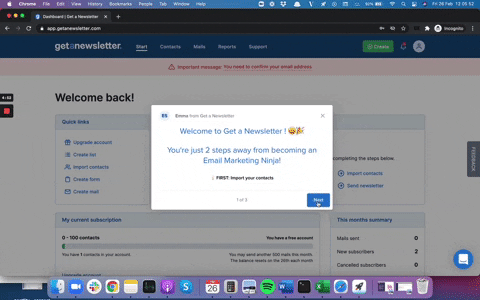
Put another way, Intercom hasn’t understood the value of segmentation, or of offering branched product tours that change in real-time based on users’ in-app behavior.
This is a pity, and we hope that they are able to fix this feature and take it out of its current MVP-like state.
Like Appcues, Intercom’s pricing is also a bit deceptive.
It starts at $59. Sounds good, right?
Wrong. You need to pay a surcharge to use the product tour feature, leading to an overall cost of $258 per month. And that only includes a seat for one person. Is it reasonable to expect that you’ll only need one person to manage support and product tours?
We’ll leave that up to you to decide, but if it were me, I’d use this tool for in-app chatbots and nothing else.
#4 – Typeform
As an automated survey tool, Typeform is a slightly different kettle of fish from the other growth platforms on this list.
It’s best used as a way to create elegant-looking surveys that can be embedded inside your product. Typeform provides survey templates to help you hit the ground running.
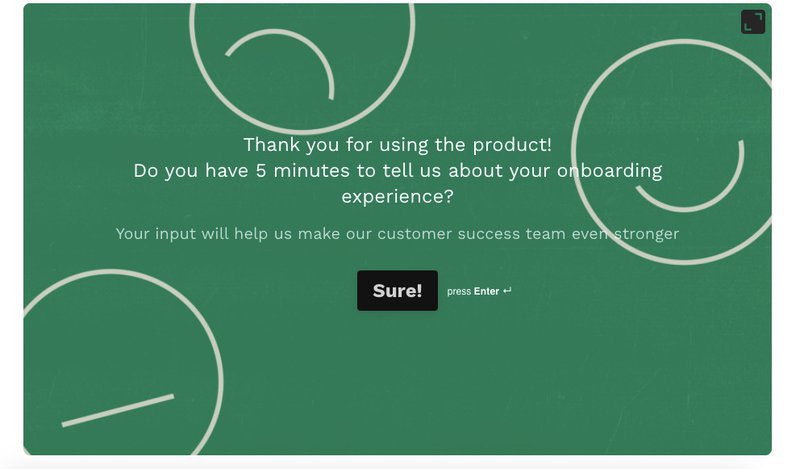
I personally prefer the look of these surveys to other tools like SurveyMonkey or Google Forms, but maybe that’s just me.
One bonus of Typeform that’s more objectively quantifiable is its conditional logic.
This allows your survey to ask different questions to customers depending on their previous answers, leading to an experience that feels very personal and surprisingly close to a real conversation.
Typeform’s surveys get top marks for segmentation for this reason, and they’re also a great communication tool to embed inside your app or onto your website.
The analytics aren’t as good as Userpilot or Appcues, but still helpful.
Typeform’s pricing starts from $29 per month, and there’s also a great free trial which I can personally vouch for.
#5 – Hotjar
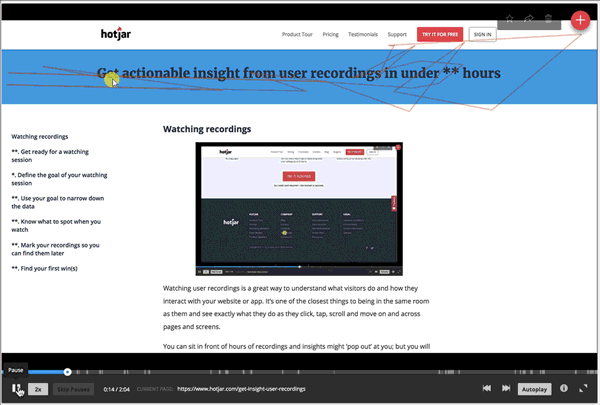
Hotjar is a versatile tool that can help SaaS businesses improve product growth through something called behavioral analytics.
What this means is that you can use Hotjar to record the mouse movements and clicks of users inside your product (or, indeed, on your website in general).
You can use this data to produce a “heat map” of your product’s most popular features.
If you want to work out why a certain part of your product hasn’t engaged a particular segment of users, you can also watch back the screen recordings Hotjar gives you to look for clues.
There are few better ways to fix bugs or identify users who are about to churn. The screen recordings offer valuable qualitative data which complements other more quantitative-leaning survey tools such as Userpilot and Typeform.
Although less well known than its eponymous heatmapping feature, it’s also worth drawing attention to Hotjar’s in-app surveys. They are comparable to Userpilot’s microsurvey in terms of functionality and ease of use.
Hotjar’s pricing starts from $39 per month, making it affordable for SaaS companies who are just getting off the ground.
Conclusion
Having finished this article, you should be in a good position to understand how powerful achieving product-led growth can be for your business.
Although sales-led growth and marketing-led growth still have their place, there is no substitute for product marketing in terms of automating your growth engine.
We’ve also shown you the range of growth platforms on the market, from product survey tools like Typeform to all-in-one tools like Intercom.
If you’re looking for a code-free tool with solid analytics, great in-app communication and powerful segmentation, Userpilot will give you what you need — and for a competitive price, at that.






